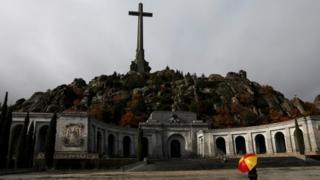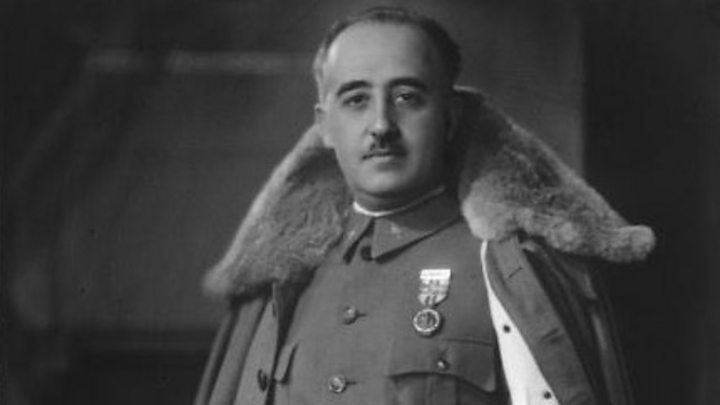 Image copyright
Image copyright
Reuters
Franco was buried alongside tens of thousands of civil war victims
Spain’s Supreme Court has ruled that the remains of dictator Francisco Franco should be exhumed.
It backed the Socialist government’s plan to move the remains from a state mausoleum to a less controversial site.
An appeal by Franco’s family against the exhumation and proposing an alternative site was rejected.
The issue has divided opinion in Spain, which remains haunted by the Franco era. He won the 1930s civil war and went on to rule Spain until 1975.
In a “unanimous” ruling, the court said it had decided to “completely reject the appeal lodged by the family in relation to Francisco Franco’s exhumation”.
He currently lies in a huge mausoleum called the Valley of the Fallen, alongside tens of thousands of civil war dead.
Many revile the complex as a monument to the triumph of fascism, and it has become a shrine for the far right.
- A headache for the Spanish government
- Battle to strip Franco family of summer palace
- Franco’s legacy 40 years after his death
The government approved the exhumation in August.
Spanish media say that, following the ruling, the government could exhume Franco before elections on 10 November.
Its plan is to put him next to his wife in the El Pardo cemetery north of Madrid where various other politicians are interred.
Many descendents of Franco’s victims support the move.
“The idea that people who were killed by Franco’s troops are buried together with Franco, it’s very absurd, and they’re still glorifying him as if he was the saviour of Spain,” Silvia Navarro, whose great uncle died in 1936, told the BBC.
But the family, who would rather he was not moved at all, wanted him to lie in a family crypt in the Almudena Cathedral – right in the centre of the capital.
The government argued that the former dictator should not be placed anywhere where he could be glorified.

The controversy comes at a time of political crisis in Spain, as the country prepares for its fourth general election in four years.
How has Spain dealt with the Franco era?
Unlike in Mussolini’s Italy and Nazi Germany, defeated in World War Two, Spain’s transition to democracy in 1975 was more gradual.
Though democracy is well established now, many believe the country has never faced up to its fascist past.
There was an unwritten “pact of forgetting” during the transition.
An Amnesty Law adopted in 1977 prevents any criminal investigation into the Franco years.
- Franco victim’s daughter prises open past
- Erasing Franco’s memory one street at a time
- UN presses Spain on Franco crimes
Statues of Franco were removed and many streets were renamed, to erase obvious signs of the fascist past.
A Historical Memory Law, passed in 2007 by the socialist government at the time, recognised the war victims on both sides and provided some help for surviving victims of Franco’s dictatorship and their families.
But the work to locate and rebury thousands of civil war dead has been slow and controversial.
More than 100,000 victims of the conflict, and the ferocious repression carried out afterwards, are still missing.
Who was Francisco Franco?
Image copyright
Getty Images
- Becomes youngest general in Spain in 1926, aged 33
- After election of leftist Popular Front in 1936, Franco and other generals launch revolt, sparking three-year civil war
- Helped by Nazi Germany and Mussolini’s Italy, Franco wins civil war in 1939 and establishes a dictatorship, proclaiming himself head of state – “El Caudillo”
- Franco keeps tight grip on power until his death in 1975, after which Spain becomes a democracy
Franco exhumation: Spain’s Supreme Court backs move to cemetery

